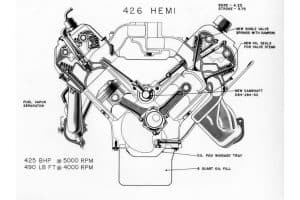Ford 2.7 EcoBoost turbo problems are few. But consumers brought some issues regarding the engine. What are the Ford 2.7 EcoBoost turbo problems?
At low mileage, Ford’s 2.7 EcoBoost has no significant issues. But there are rare reports of the following problems:
- Leaking plastic oil pan
- Broken head gaskets
- Cylinder head damage
- Engine gets dirty easily
- Costly synthetic oil
- Engine damage due to lack of proper maintenance
These problems are sometimes expected of new engines since Ford released the second generation in 2018. However, customers have reported no major problems.
Read on to learn more about Ford’s 2.7 EcoBoost engine problems and how you can resolve them.

Ford 2.7 EcoBoost Problems
The following are some of the 2.7L EcoBoost engine problems and solutions.
1. Leaking Plastic Oil Pan
Leaking plastic oil pan could result from improper assembly. Double-check your assembly and find out any faulty connections.
Solution: You can change the oil pan or have it repaired.
2. Broken Head Gaskets
This problem is one of the results of improper assembly. Remember to double-check the setup if you have correctly positioned the parts.
Solution: After going over your assembly carefully and finding out any errors, you can then replace the broken head gasket.
3. Cylinder Head Damage
Some consumers reported cylinder head damages. This problem could also be due to faulty assembly. So you have to perform the same procedure as 1 and 2.
Solution: Replace the cylinder head.
4. Engine Gets Dirty Easily
The engine gets dirty quickly because of direct injectors.
Solution: You have to clean every after injection to prevent dirt and fuel from accumulating. In worst-case scenarios, you may have to buy a new engine.
5. Costly Synthetic Oil
One of the Ford EcoBoost twin turbo problems 450 is that it has to use high-quality synthetic oil, which is quite expensive. So, it can be a problem when you’re cutting on costs. But the engine’s low fuel consumption makes up for this costly oil.
Solution: There’s no solution to the high cost of synthetic oil. You will have to continue buying it, as the oil would guarantee that your engine would last longer.
6. Engine Damage Due to Lack of Proper Maintenance
Any engine, if not adequately maintained, would get damaged.
Solution: Comply with your vehicle’s scheduled servicing, even when you find nothing wrong with it. Maintain your engine regularly.
5.0 Coyote F150 Reliability [How Reliable Is This Ford Engine?]
How the Second Generation 2.7 EcoBoost Solved the Problems

Ford used the engine in several of its models in 2015 when Ford first introduced the 2.7L EcoBoost engine into the market.
The company has addressed the problems with the second generation EcoBoost engine. The following innovations solved specific issues that may have occurred in the first-generation engine.
1. Lightweight Cams
Heavy cams and camshafts would add weight to the vehicle, but the second generation remedied this problem by creating lightweight yet durable cams and similar parts. Being lighter is a significant advantage when you’re using your vehicle to tow loads.
2. Electrically Activated Wastegate
The wastegate protects the turbocharger and the engine by regulating the maximum boost pressure within the turbocharger systems. Exhaust gases are diverted, controlling the turbine speed. This process also regulates the compressor’s rotating speed.
3. New Exhaust Gas Recirculation System (EGR)
The EGR increases the efficiency of the engine and reduces cylinder temperatures. Such a process would occur because of reduced throttling losses and increased manifold pressure. And the reduced heat rejection enhances the thermal energy’s conversion to mechanical work.
4. Addition of Port Fuel Injection
The addition of this type of injection prevents the carbon buildup in walls and valves. More so, it optimizes the performance of the turbocharged engine.
5. Electronic Variable Displacement Oil Pump
This oil pump reduces friction and fuel usage as well as modulates oil flow as cost-saving features.
6. Dual Range Camshafts
This feature increases the range and efficiency of the dual cam drive system and simultaneously reduces the risk of engine failure.
7. Compacted Graphite Iron (CGI) Block Engine
Compacted graphite iron makes the engine durable but lightweight, as it provides superb tensile strength and dimensional stability. It is also more compact than other engines. The two-piece block design allows inner casting and greater stiffness, providing durability and efficiency.
Advantages of the Second Generation Ford 2.7 EcoBoost Engine
The 2018 2.7L EcoBoost engine has several advantages over its older version. The upgraded engine has solved most of the problems encountered with the first-generation model.
1. Lighter and Compact
The engine is lighter and compact because the components are lighter as well. This property allows you to add more towing weight to your vehicle.
2. More Reliable Electric Features
The electronic variable displacement oil pump and the electrically activated wastegate are reliable features that maximize your engine’s performance.
3. Increased Durability
The durable compacted graphite iron ensures that the engine is stable, durable, and has incredible tensile strength. These properties would make the engine last longer.
All the other engine parts are guaranteed high quality and have passed the standard of excellence set by car manufacturers. With these sterling aspects, the reliability of vehicles using the 2.7 EcoBoost has also increased.
4. Fuel Cost-saving Property
Direct fuel and port injection will help you efficiently manage your fuel and save on cost. You can use direct injection and port injection to optimize smooth engine performance as well. Affordable fuel consumption, coupled with a sterling performance, is what car owners want.
5. Lesser Risk of Detonation
The engine’s compression ratio is high at 10.3 is to 1; thus, reducing the risk of detonation. It also has a back-flow and air-to-air intercooling features that allow the engine to work efficiently without combusting–giving a powerful optimum performance. You get all these advantages without the fear of overheating the engine.
6. Improved Engine Performance
The twin turbochargers provide outstanding power and considerable torque that maximize the engine’s performance. The exhaust camshaft and variable intake features would help in optimizing the engine’s power.
7. Excellent Towing Capacity
The 2.7L EcoBoost V6 engine offers maximum towing loads of 2,250 and 8,500 pounds. You can maximize its payloads as the engine weighs lighter. Although the engine is more lightweight, it has the same towing capacity as most vehicles. You can say it’s small but powerful.
We’ve discussed some Ford EcoBoost Turbo problems that you may encounter. Let’s now proceed to some tips for solving 2.7L EcoBoost issues.
Tips for Solving 2.7 EcoBoost Problems
Here are some tips to help solve the 2.7 EcoBoost engine problems mentioned earlier. You may want to comply with these pointers to avoid encountering them too.

1. Check Your Assembly First When Problems Occur
Sometimes, problems occur because of improper or faulty assembly. Before you break your head trying to find out the engine’s problem, check your assembly first.
Did you assemble the engine correctly? Are the vehicle’s different parts placed where they should be? You may have swapped the screws (right and left) or have used a different connection to another car part.
Refer to your user’s manual when in doubt, or consult a licensed car/truck mechanic who knows vehicles like the back of their hands.
2. Find the Root Cause of the Problem
You cannot find an easy solution to a problem unless you know the root cause. Once you find the root cause, the solution would be relatively easy.
An example is a squishy brake pedal. If you know that air bubbles in the brake fluid cause a spongy brake pedal, then you can directly eliminate the air bubbles by bleeding the brakes.
But if you don’t have any idea, you will have to go around the bush solving the problem through trial and error.
3. Use Simpler Solutions
Solutions don’t need to be complex to solve problems. You could use simpler solutions instead of thinking about complex ones. Remember, a simple error may cause a big problem.
For example, failure to securely tighten the screws could cause serious problems. All you have to do is tighten the screw – and voila – you have solved the problem.
4. When Unsure, Take Your Vehicle to a Reliable Motor Shop
You may not be able to solve all 2.7 EcoBoost problems, and it’s okay. Many vehicle owners are not engine masters. That’s why motor shops are there to serve you.
Take your vehicle to your car dealer for a thorough examination, or bring it to a trusted and reliable motor shop to ensure that a licensed mechanic would efficiently rectify any problems.
5. Regular and Proper Vehicle Maintenance Prevent Problems from Occurring
If you service your vehicle regularly and properly maintain it, you’re safe. But you cannot avoid ordinary wear and tear problems due to prolonged use. But you would be able to prevent significant damages. The reason is that regular vehicle checkups would detect the damage before it gets bigger.
Once you, or the mechanic, find any damage, no matter how minor it is, you have to repair it immediately. Think of the car as your body. When one small part of your body is sick, your whole body would feel it. So you have to treat the injury quickly.
Procrastination might cause you thousands of dollars later. You’re also putting your life on the line because serious accidents could happen due to that ‘minor’ engine damage.
6. Only Buy Your 2.7 EcoBoost Engine from Reputable Companies
I’m also saying that you should buy your vehicle only from reputable motor shops. For the EcoBoost engine, you must buy from Ford. Buying genuine engines would guarantee that they are durable and reliable.
You could request a warranty from Ford as well. If it’s a complete engine change, let Ford Motor dealers or shops do the process to make sure it’s done correctly. Brake it in and test drive your car before finally driving it on the highway.
7. Keep Some Spare Parts Handy
You could store some spare parts securely, so you can use them immediately when you need them. Note that changing quickly damaged parts would prevent further damage to your car and engine.
In addition, the parts may not be available when you need them. So, to play safe, store new engine or car parts that could easily get damaged by wear and tear.
About the Ford EcoBoost
Ford introduced the 2.7L EcoBoost engine in 2015 as a new engine for the Ford F-150 model. Later on, Lincoln MKX, Fusion Sport, and Edge Sport use the engine. The first generation had some minor problems with head gaskets and cylinder heads.
The 2.7 EcoBoost features a V6 twin-turbo engine, which Ford designed. It produces fewer emissions and uses fuel sparingly. But it delivers power and massive displacement torque.
The twin-turbo engine peaks at 325 horsepower and produces 600 pound-feet of torque. It also requires 87 octane fuel or premium fuel. The engine provides cylinders with four valves, a cooling system, an auto stop-start.
Ford 2.7L EcoBoost Second Generation Engine
Ford produced this V6 engine in 2018 for the Ford F-150. This engine differs from the first generation because of the following changes or additions:
- Lightweight cams
- Electrically activated wastegate
- New exhaust gas recirculation system (EGR)
- Addition of port fuel injection
- Electronic variable displacement oil pump
- Dual range camshafts
- Compacted-graphite iron (CGI) block engine, making the machine durable but lightweight
All these features make the second generation 2.7L EcoBoost engine better than the first generation. Due to these changes, the second generation is more reliable, durable and causes lesser carbon emissions.
Conclusion – Ford F-150 EcoBoost Turbo Problems
Ford EcoBoost turbo problems are minor. At low mileage, consumers have rare reports about:
- Leaking plastic oil pan
- Broken head gaskets
- Cylinder head damage
- Engine gets dirty easily
- Costly synthetic oil
- Engine damage due to lack of proper maintenance
These minor problems occurred as sometimes expected of new engines. Since Ford released the second generation in 2018, no major problems have been reported by customers, indicating that the newer engine is more reliable than the previous one.
Related reading:
7.3 Powerstroke Problems – Starting, Injectors, Transmission, Wastegate
Ford Engine Firing Order [302, 5.4, 4.6 390, 5.0, 351]


![Oil in Coolant [Causes and Solutions to Coolant in Oil] oil in coolant](https://roadsumo.com/wp-content/uploads/2021/10/oil-in-coolant-150x150.jpg)
![White Smoke On Startup Then Disappears [Causes and Solutions] White smoke On Startup Then Disappears](https://roadsumo.com/wp-content/uploads/2021/11/white-smoke-on-startup-then-disappears-150x150.jpg)


![Check Engine Light on After Oil Change [Causes and Solutions] Check Engine Light on After Oil Change](https://roadsumo.com/wp-content/uploads/2021/10/check-engine-light-on-after-oil-change-150x150.jpg)
![Read more about the article Duramax Years to Avoid [Worst Duramax Engines]](https://roadsumo.com/wp-content/uploads/2022/05/Duramax-years-to-avoid-300x200.jpg)

